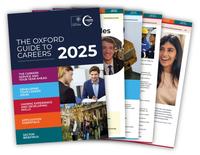Style
Aim for a professional tone that conveys your message to the reader succinctly - remember it's not an essay or dissertation! Write in clear, concise English – take care not to overwhelm the reader with too much detail and avoid jargon they may not understand, such as Oxford specific terms like "prelims" and "collections" - it's best to explain what these are e.g.: "1st year exams" and "termly exams"....
Content
Layout
Structure it like a business letter, brevity adds power and aim for no longer than 1 side of A4 in length. However, if the organisation gives you very specific instructions about the structure, length and content, follow their guidance.
Introduction
Introduce yourself and explain why you are writing. If you are responding to an advertisement, state where you saw it. This tells the recruiter why they are reading the letter, and it gives them feedback on which of their advertising sources are working. You need to think about how you would like to introduce yourself; it could be that you mention the course you are studying and when you plan to finish it along with your place of study.
Why this job?
Explain why you are interested in the job and the organisation. Tailor the letter to the organisation and job description to make it clear that you haven't sent out multiple copies of the same letter to different employers.
Draw on your research, especially what you have learned from other resources in addition to their website. For example, speaking with their staff at a careers event or reading reports they have written etc. as this will demonstrate an awareness and understanding of them that goes beyond the basics. Be specific about why the firm/position is particularly attractive to you - think about examples of the work they have done, their clients, their position in the market that makes them unique.
Why you?
Explain why you are well-suited to the position. Refer to the most relevant skills, (c.3-5), experience and knowledge you have and match what you say to the requirements outlined in the job description. Make sure you read our guidance on demonstrating you fit the job criteria for more advice.
As your aim is to convince the recruiter that you are a suitable candidate for the job, focus on your accomplishments and the transferable skills that are relevant to the role. State explicitly how you match the job criteria – don’t expect the person reading your letter to infer your skills or experiences for themselves.
Conclusion
Reiterate your desire to join the organisation and end on a ‘look forward to hearing from you’ statement, followed by ‘Yours sincerely’ if writing to a named individual and ‘Yours faithfully’ if you have not been able to find a named contact.
Use of AI tools when writing cover letters
The rapid development of AI seems to be running ahead of the regulatory and legal frameworks, however, we anticipate that recruiters will be developing their own policies on whether AI generated content can be used by applicants during the recruitment process. Many will have a clear, published position on the use of AI by applicants and they will expect candidates to follow any instructions they give. If you are unsure, you can also ask the organisation directly, for example, during a careers fair or other networking event.
Where an organisation does not provide clear guidance, you will need to make your own judgement about whether or not to use generative AI tools when making an application.
REMEMBER: Recruiters are experts at reading and reviewing applications and can often easily identify AI generated material. In a highly competitive market, the quality and unique nature of your application is more likely to make you stand out from (sometimes hundreds or thousands of) other applications and be put forward to the next part of the application/assessment process.
If you choose to use a generative AI tool to help with applications…
- Think of it as an assistant, not a complete solution: AI can help you to get started, offer a broad structure, or polish your applications, but it is not a substitute for well-researched, tailored and personal content.
- Make it your own: AI-generated content is likely to be generic and lacks the personal touch that only you can provide. Customise the letter to reflect your unique experiences and personality.
- Check references and sources carefully: AI tools can generate inaccurate or outdated references. Always verify the information and ensure it aligns with your research.
Top tips
- Write to a named person if you can
- If you have not been able to find a named contact, you could use ‘Dear Recruitment Manager’ or ‘Dear Recruiter’.
- Check your spelling and get someone else to read it over.
- Check that it says clearly what you want it to say. Are there any sections that are hard to read, overly long sentences? If yes, try to simplify the language, avoid jargon, use shorter sentences or take out that section completely.
- Make the letter different each time. If you insert another company name, does the letter still read the same? If so, tailor it more specifically to the firm - you may need to do further research
- Don’t start every sentence with “I”.
- Give evidence for all your claims.
- Be enthusiastic and interested.
- Don’t repeat your whole CV.
- It’s normal to find cover letters tricky to write. Give yourself plenty of time before the application deadline to re-draft.
- A careers adviser at the Careers Service can give you feedback on the content and structure of your cover letter and CV, and advise you on how best to target particular sectors – write one first, book an appointment on CareerConnect and ask a careers adviser for feedback.





